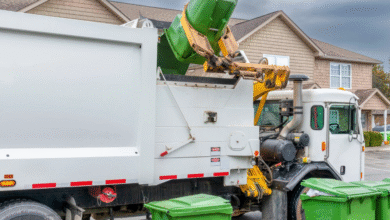Importance of Waste Oil Recycling

Waste oil recycling is a crucial process that helps protect the environment while maximizing resource efficiency. Every year, industries, transportation systems, and households generate millions of liters of used oil. If not disposed of properly, this oil can cause severe pollution, contaminating water, soil, and air. Recycling waste oil ensures that valuable materials are recovered and reused instead of being discarded as hazardous waste. This article explores the process, benefits, challenges, and future trends in waste oil recycling.
Understanding Waste Oil Recycling
Waste oil recycling refers to the process of collecting, treating, and reusing used oil to produce high-quality lubricants, fuels, and other industrial products. Waste oil can come from various sources, including motor vehicles, industrial machinery, and cooking processes. Rather than being incinerated or dumped, waste oil can be refined and repurposed to reduce environmental impact and economic waste.
Recycling waste oil involves several techniques, such as filtration, chemical treatment, and re-refining. These processes remove impurities, allowing the oil to be used again in different applications. Industries worldwide are adopting waste oil recycling to comply with environmental regulations and promote sustainable practices.
Sources of Waste Oil
Waste oil is generated from various industries and everyday activities. The most common sources include:
1. Automotive and Transport Sector
- Used engine oil from cars, trucks, and motorcycles.
- Transmission and hydraulic fluids.
- Lubricants from heavy machinery and equipment.
2. Industrial Operations
- Lubricants and coolants from manufacturing plants.
- Transformer oils used in power grids.
- Industrial cutting and grinding fluids.
3. Household and Commercial Kitchens
- Used cooking oil from restaurants and homes.
- Frying oils and greases from food production.
Recycling each type of waste oil requires different treatment methods to ensure safe and effective reuse.
The Waste Oil Recycling Process
Waste oil recycling follows a series of steps to remove impurities and convert used oil into reusable products. The primary processes include:
1. Collection and Storage
The first step in waste oil recycling is the proper collection and storage of used oil. Collection is done through:
- Designated recycling centers.
- Industrial waste management services.
- Automotive service stations and workshops.
Storage is crucial to prevent spills and contamination. Waste oil is stored in sealed containers away from water sources to avoid environmental hazards.
2. Pre-Treatment and Filtration
Before refining, waste oil undergoes pre-treatment to remove large particles, sludge, and excess water. Methods include:
- Sedimentation: Allowing impurities to settle at the bottom.
- Filtration: Using mechanical filters or centrifuges to separate solid contaminants.
- Dehydration: Removing water content to improve oil quality.
3. Re-Refining Process
Re-refining is the most effective way to recycle waste oil into high-quality lubricants. It involves:
- Distillation: Heating oil to separate different fractions based on boiling points.
- Chemical Treatment: Using acids or solvents to remove impurities and improve stability.
- Hydrotreating: Introducing hydrogen to eliminate sulfur and enhance oil performance.
Re-refined oil meets industry standards and can be reused in automotive, industrial, and commercial applications.
4. Conversion to Fuel
Waste oil can also be processed into alternative fuels such as:
- Biodiesel: Made from cooking oils for use in diesel engines.
- Industrial Heating Fuel: Used in boilers and furnaces.
- Marine and Power Generation Fuels: Alternative energy sources for ships and power plants.
5. Blending and Additive Enhancement
Once refined, recycled oil is blended with additives to enhance its properties, including:
- Improved viscosity.
- Better oxidation resistance.
- Extended lifespan for industrial use.
Benefits of Waste Oil Recycling
1. Environmental Protection
Waste oil is a hazardous pollutant if not handled correctly. Recycling prevents:
- Soil contamination from oil spills.
- Water pollution caused by improper disposal.
- Air pollution from burning untreated oil.
2. Resource Conservation
Recycling reduces the need for crude oil extraction, preserving natural resources. By refining and reusing waste oil, industries decrease their reliance on fresh petroleum products.
3. Economic Advantages
Waste oil recycling provides economic benefits such as:
- Lower costs for lubricants and fuels.
- Job creation in the recycling and refining industry.
- Reduced expenses for waste disposal and environmental cleanup.
4. Energy Efficiency
Producing re-refined oil requires significantly less energy than refining crude oil. This contributes to lower carbon emissions and a reduced ecological footprint.
5. Compliance with Regulations
Governments and environmental agencies enforce strict laws on waste oil disposal. Recycling ensures businesses comply with regulations while promoting responsible waste management.
Challenges in Waste Oil Recycling
Despite its benefits, waste oil recycling faces several challenges, including:
1. Collection and Segregation Issues
Many waste oil sources are small and dispersed, making collection difficult. Proper segregation is also essential, as mixing different types of oil can lower recycling efficiency.
Read also: Why Business Needs a Reliable Field Service Management Solution
2. Contamination and Quality Variability
Waste oil often contains contaminants such as heavy metals, sludge, and chemicals. Ensuring consistent quality after refining requires advanced treatment processes.
3. High Initial Investment
Setting up a waste oil recycling plant requires significant capital investment in technology, infrastructure, and regulatory compliance. However, long-term benefits outweigh initial costs.
4. Market Demand and Awareness
Many consumers and industries are still unaware of the advantages of recycled oil. Educating businesses and promoting sustainable practices can increase demand for recycled oil products.
Future Trends in Waste Oil Recycling
As sustainability becomes a priority, waste oil recycling is evolving with new technologies and innovations. Key trends include:
1. Advanced Filtration and Treatment Techniques
New purification methods, such as nanotechnology and membrane filtration, enhance waste oil recycling efficiency.
2. Integration with Renewable Energy
Many recycling plants are incorporating renewable energy sources such as solar and wind power to reduce operational costs.
3. Development of Eco-Friendly Additives
Research is focused on producing biodegradable and non-toxic additives to improve the performance of recycled oil.
4. Circular Economy Initiatives
Industries are increasingly adopting circular economy models, ensuring that waste oil is continuously recycled and reused instead of discarded.
5. Government Incentives and Policies
Many governments are offering incentives such as tax benefits and subsidies to encourage businesses to invest in waste oil recycling.
Conclusion
Waste oil recycling is an essential practice that promotes environmental sustainability, reduces resource depletion, and provides economic benefits. By following proper recycling techniques, used oil can be transformed into valuable products such as re-refined lubricants and alternative fuels. While challenges such as contamination and high investment costs exist, advancements in technology and government support are making waste oil recycling more efficient and accessible. As industries and individuals become more environmentally conscious, waste oil recycling will continue to play a vital role in protecting the planet and supporting a circular economy.





